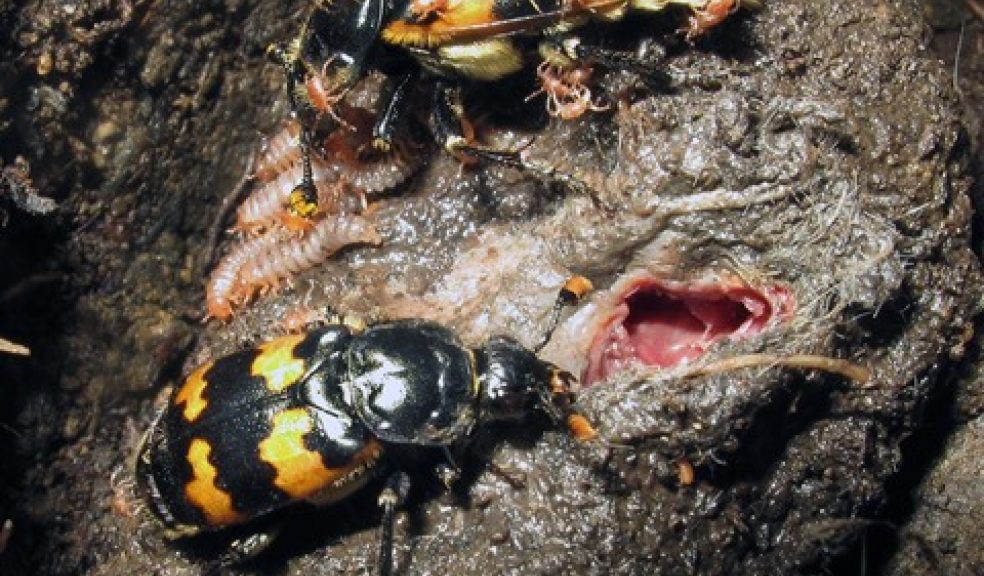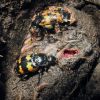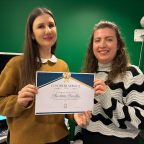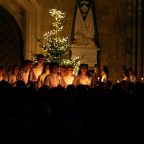
Don't read this over breakfast!
A photograph taken by a researcher from the University of Exeter of a pair of burying beetles feeding on an animal carcass has won first prize in a new competition.
Paul Hopwood’s image, snapped in the Cornish countryside, was announced as the winner of NERC’s inaugural short article and photography competition at an awards ceremony in London yesterday.
Photographic entries were judged on how eye-catching the imagery was and whether or not the photograph conveyed the applicants’ research, whilst the essays looked for the ability of applicants to communicate the excitement of their PhD research to a non-specialist audience.
The judges felt that Paul Hopwood’s image causes the viewer to do a double take as they realise the brightly coloured beetles aren’t walking on mud, but on a dead mouse that the female of the pair is tearing apart, while the male looks after their offspring.
Paul, a PhD student at the University of Exeter’s Cornwall Campus at Penryn, is exploring how and why variation in the environment experienced by burying beetles affects the way they care for their offspring.
He said: “I’m absolutely delighted to have won the competition. This wild male was attracted to a camera aimed at the mouse and the female flew in soon after he called her by releasing pheromones. It was particularly cool because in the Cornish woodland where I am working, for every one of this species that turns up we find about 1,000 other, more common, species. Each has an amazing ability to recognise the pheromones of its own species. They are pretty amazing animals.”
The four judges on the panel were; Jonathan Bates, Director of Communications for NERC, Harriet Jarlett, a science writer for NERC, Dr Helen Czerski an oceanographer and TV presenter on popular science programmes and Professor Simon Redfern.
Professor Redfern, a Professor of Mineral Physics at the University of Cambridge who has recently worked with the BBC as a British Science Association Media Fellow, said: “Paul Hopwood’s family portrait of burying beetles feasting may make your skin crawl, but it is difficult to take your eyes away from it. Mother and father are highlighted in a stream of light as they care for their brood of larvae, banqueting on decomposing carrion that forms the dark ground of this image. The glossy black and yellow carapace of the mother shines out, contrasting against the fleshy brood and their food, while the father labours under a burden of infesting mites.”
The competition entries, of which 67 were received, were independently ranked by the judges with the three highest ranking receiving a prize of up to £500.
There was also success for Dominic Cram of the University of Exeter, who won third place in the essay section for his description of catching and tagging birds in the Kalahari.
The winning essay is by Laura Hepburn of the University of Southampton and describes underwater hydrothermal vents blowing their signature black smoke across her monitoring screens.
Kirsty Grainger, Head of Skills and Careers at NERC, says: “We were delighted by the response to this inaugural competition. The diversity in the winning entries alone highlights the breadth of world-class research training NERC PhD funding supports. Congratulations to all the winners and thanks to all the judges and all those who submitted entries; the judges’ task was not an easy one.”

















